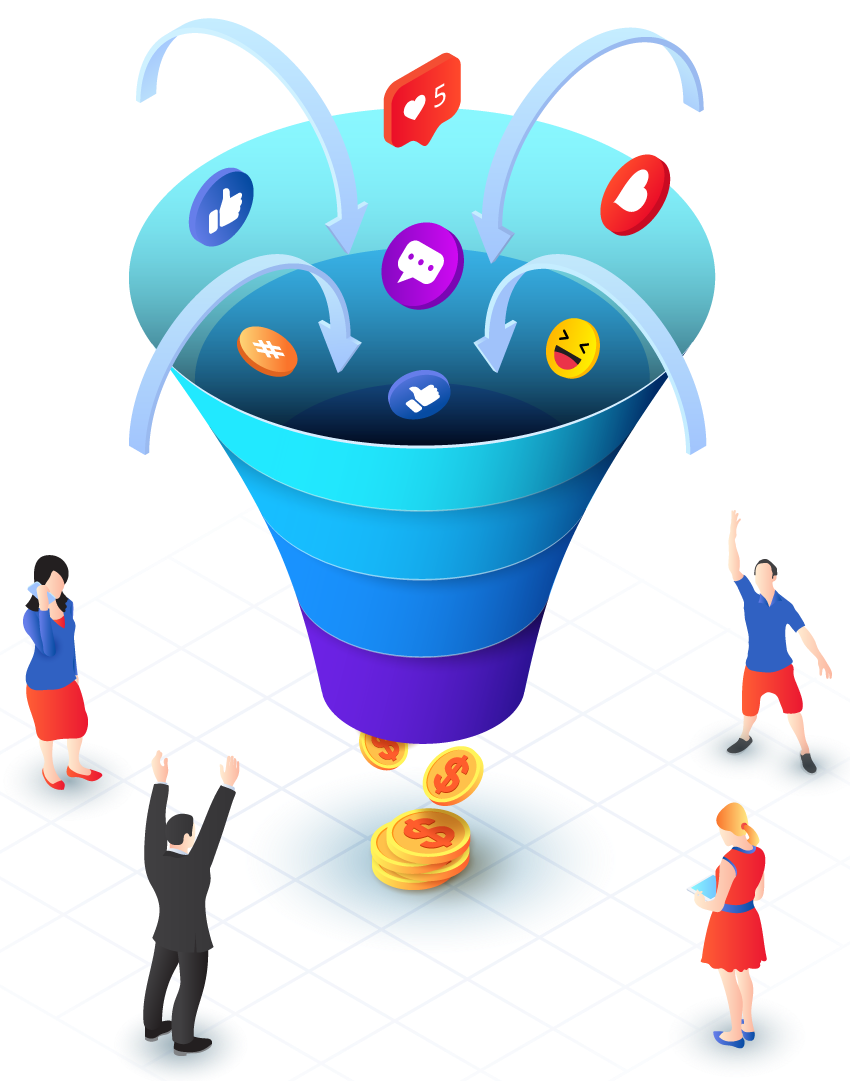Mastering Conversion Rates - The Science of Funnels
A conversion is the final step a potential customer takes towards becoming a paying customer. It could be purchasing a product from an online store, signing up for a newsletter, downloading a mobile app, or even just filling out a form. Conversions are important because they allow businesses to measure the effectiveness of their marketing and sales efforts.
Mastering conversion rates is essential to the success of any business. The process is complex and requires an understanding of the user experience and how to leverage data to optimize for conversions. In this article, we will explore the definition of a conversion, the different types of conversions and how to increase conversion rates by understanding and optimizing the sales funnel.
The goal of a conversion funnel is to move prospects through the stages of awareness, interest, decision and action. The funnel exploits the psychological principle of scarcity, which is that people are more likely to want something if they believe it is in short supply or that others have already gotten their hands on it.
The funnel also utilizes the sunk cost fallacy, which is that a person will continue to invest in something they have already invested in, even if it is not yielding positive results, because of their perceived “cost.”
Understanding the definition of a conversion and the different types of conversions will help you better understand how to measure and optimize your marketing and sales activities. This will result in a higher conversion rate, which can ultimately lead to more revenue for your company.
When it comes to conversions, the most common metric is the website conversion rate. This metric is calculated by dividing the number of website conversions by the total number of visitors to the site.
A high conversion rate is a good indicator of the quality of your website and the effectiveness of your marketing and sales efforts. However, there are many factors that can influence a conversion rate, including the time of day and day of the week when users visit your site, the content they view, the navigation and structure of your website, and the effectiveness of your call-to-action buttons (color, text, placement). It is important to track these metrics and continuously analyze and test your website to identify areas where improvements can be made.
Funnel science is the iterative process of optimizing a marketing or sales funnel to improve the likelihood that users will take the desired action on your website. This can include data collection, analysis, and testing, such as A/B or multivariate tests, to determine the best ways to optimize your sales or marketing funnel. By analyzing your data and using the insights you gain, you can create a more compelling and relevant user experience that leads to more conversions.

Learn how To build sales funnels
Subscribe To My Email List And Get Updates On Building Effective Sales Funnels That Generate Leads & Sales In Your Business.
My Recent Posts
All-in-One Sales Automation Platform
Check out my recent post on all-in-one sales and marketing tools and what I think of it.
Sales Funnels
Check out my recent post on sales funnels and what I think about them. Are they still worth it?

The Same "about me" text you wrote on your about me page; you want to write it here or write an excerpt of it here. Just make sure it makes sense, and looks complete if you're going to write an excerpt. So delete this text and add yours on every article page.
[ENTER YOUR NAME HERE]
©Copyright [ENTER CURRENT YEAR] [ENTER COMPANY NAME OR DOMAIN NAME]
[ENTER COMPANY ADDRESS]
[ENTER COMPANY CITY/STATE/PROVINCE & Zip Code/Postal Code]
